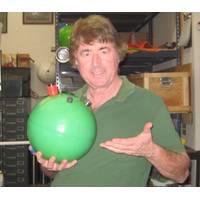
Lander Lab #5: Lithium Polymer Batteries
the hull means you only subtract the water weight from the buoyancy budget, rather than the air weight when it’s inside the hull. Just a SWAG, but for the same amount of buoyancy, a craft may be able to carry an additional 25% power.For more background details on LiPo’s, see Battery University <https://batteryuniversity.com/>; “A Guide to Understanding LiPo Batteries” <https://www.rogershobbycenter.com/lipoguide>; and “The care and feeding of LiPo packs” <https://www.promodeler.com/askJohn/How-To-Care-for-LiPo-Packs>.Follow your curiosity and
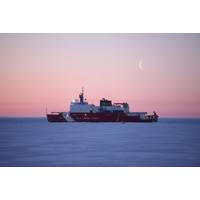
Call for Nominations: UNOLS Arctic Icebreaker Coordinating Committee
University-National Oceanographic Laboratory System (UNOLS) is seeking nominations and self-nominations to fill an open position on its Arctic Icebreaker Coordinating Committee (AICC) for a three-year term starting in January 2022. This new position may also be used to fill the AICC Chair position, which also opens this January.UNOLS is an organization of 59 academic institutions and National Laboratories involved in oceanographic research and joined for the purpose of coordinating oceanographic ships' schedules and research facilities.UNOLS's AICC serves a liaison function by providing
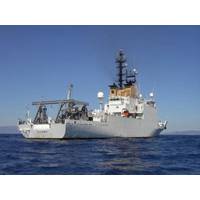
NATO RV Alliance is not just quiet, it’s ice-capable
. We have expanded use of the ship for additional customers, and we’ve been successful with it, particularly with institutes and academia, most notably in the U.S., which now have access to this world-class platform. I spend a proportion of my time meeting with the people from University-National Oceanographic Laboratory System (UNOLS), Office of Naval Research (ONR), National Oceanic and Atmospheric Administration (NOAA), and other people who go to sea on a regular basis but don’t necessarily have the platforms available that they would like. So we’ve done a considerab
MATE At-Sea Internship Opportunity
Six Month Internship: Application Deadline: January 18, 2019The MATE Center and the University National Oceanographic Laboratory System (UNOLS) are pleased to announce that we are accepting applications for the 2019 MATE/UNOLS Long-Term Internship (approximately six months) through January 18, 2019. Please share this with undergraduate students or recent graduates from an undergraduate program who you think would be interested and qualified. Applicants must be ready to enter the job market in the field of marine technology with academic studies completed before departing. The departure date will be in
PDI to Supply Centerboard for OSU's New Research Vessel
Power Dynamics Innovations LLC (PDI) said it has been subcontracted by Gulf Island Shipyards LLC, to design, engineer, construct, install and test the centerboard system for Oregon State University (OSU)'s new Regional Class Research Vessel (RCRV).Gulf Island Shipyards is building the vessel under a contract from OSU, with an option for two additional vessels. OSU has engaged with naval architecture and engineering firm Glosten to lead the design contract of the next class of oceangoing research vessels for the National Science Foundation (NSF).These state-of-the-art 193-foot ships will be
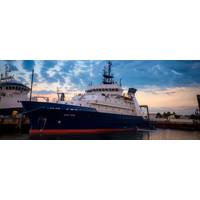
New Research Ship Sally Ride Sails for Home
are the basis for antibiotics and cancer therapies, avoiding the large-scale instability in natural systems that is a consequence of climate change, and filling in the jigsaw puzzle of global tectonics that lets us understand the risk of seismic events where we live. The ship is one of three University-National Oceanographic Laboratory System (UNOLS) vessels operated by Scripps Institution of Oceanography at UC San Diego. As with 18 other vessels in the UNOLS fleet, it is available for use by oceanographers, geoscientists, biologists, and atmospheric scientists around the country. R/V

El Faro’s Voyage Data Recorder Located
Facility, a center funded by the National Science Foundation, the Office of Naval Research, and the National Oceanic and Atmospheric Administration and managed by WHOI. The NDSF operates, maintains, and coordinates the use of deep ocean research vehicles in coordination with the University National Oceanographic Laboratory System, an organization of academic institutions and national laboratories involved in marine research.
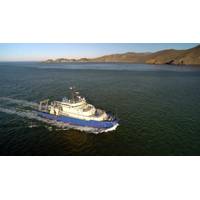
Research Vessel Neil Armstrong Joins WHOI Fleet
learn more about how the ocean works and how it affects us on shore—at a time when rapidly occurring changes on our planet demand our greater attention. “New technology like this always reinvigorates the [ocean science] community,” said Jon Alberts, executive secretary of the University-National Oceanographic Laboratory System (UNOLS), the agency in charge of coordinating operations and research on the 21 ships in the U.S. academic fleet. “The community has been waiting a long time for this ship and is watching its progress very closely.” But the increased
Workshop to Address Green Boats and Ports
The University-National Oceanographic Laboratory System (UNOLS), the University of Rhode Island’s Graduate School of Oceanography, and 11th Hour Racing will host representatives from academia, government agencies and private industry for a workshop to discuss current and future environmental sustainability of ships, boats and ports. The event, Green Boats and Ports for Blue Waters III, will take place April 5-6, 2016, at the University of Rhode Island’s Graduate School of Oceanography in Narragansett, R.I. Previous workshops held in 2012 and 2014 opened a dialog on marine sustainabilit



 February 2024
February 2024





